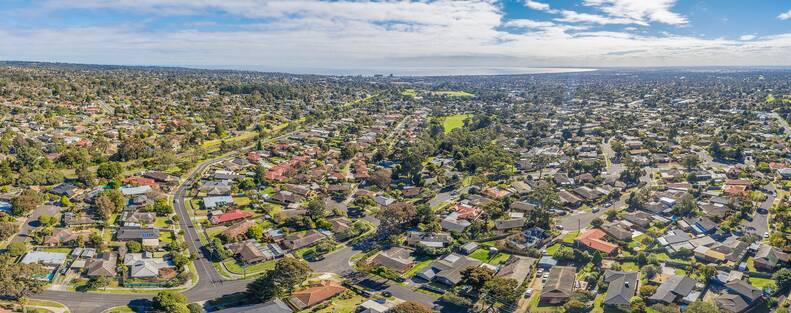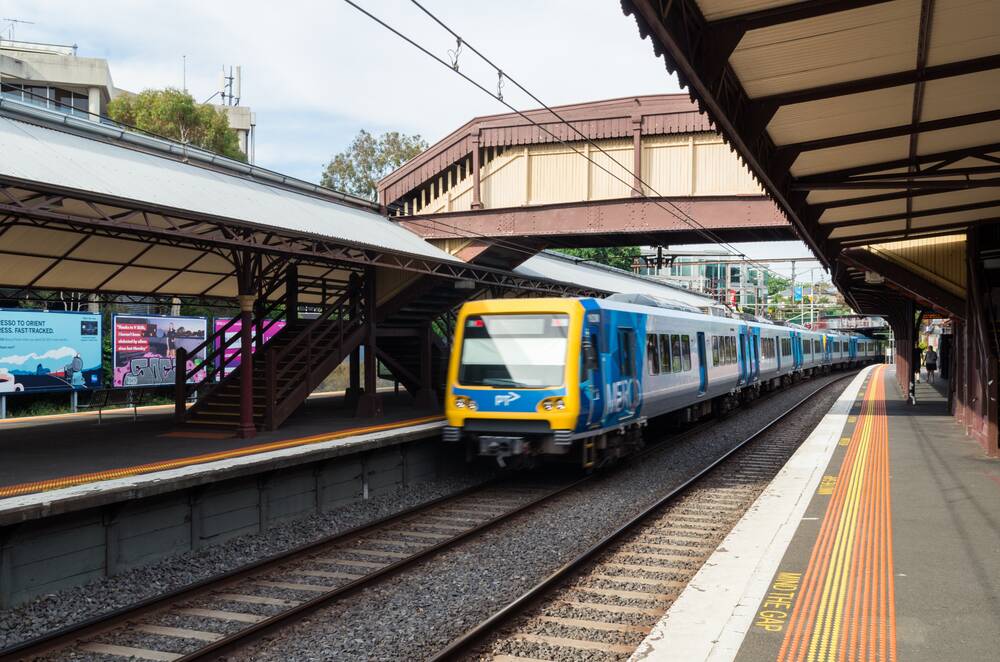Urban design: What goes into creating a new suburb?

This is branded content.
The city of Sydney is expanding at an unprecedented pace, with new suburbs and railway extensions popping up across greater Sydney, the city's northwest and southwest, in particular, experiencing rapid population growth and development.
Even though this growth may be new to townships across Sydney's outer west, the expansion of our major cities is a phenomenon that Australia's most densely populated city centres have been experiencing for quite some time now.
Melbourne is expanding in all directions, as is Adelaide and Brisbane as well, although at less of an alarming rate than Australia's most heavily populated state capitals. As a result, a growing number of tertiary students have opted to undertake a master of urban design in order to better understand and engage with urban planning as a discipline.
There's likely to be no shortage of professional opportunities for young Australians with this qualification or wider qualifications in the field of environments and civil engineering.
Graduates can go on to work for government organisations as part of urban redesign teams like the Victorian government's level crossing removal project or even within the private sector with building companies and property development agencies.
For most urban design students, however, working to develop a brand new suburb and leave a lasting mark on the city you call home is the ultimate professional goal. Creating a suburb is a particularly eclectic process, and there are plenty of moving parts that are likely to all be overseen by urban design professionals.
Curious? Here's a closer look at all the minute elements that must be considered when creating a new suburb.

Layout and land zoning
The layout of any new suburb should ideally be fluid and intuitive, melding from one main road to another. Residential areas should be contained, branching out from main thoroughfares like veins.
There are many reasons for keeping residential areas highly segmented from other zones, but one of the most prominent reasons is simply because residential areas are expected to maintain certain standards for noise that are largely impossible to apply to commercial or industrial zones.
Council zoning is likely to play a vital role in the development of your suburb's major roadways, as the style of roadways naturally changes between residential areas and commercial or industrial districts.
When designing a new suburb, it's a common practice for urban designers to allocate colours for select zones to get a gauge of the balance between different zones as they're set to exist in the emerging township.
Many urban planners may also compare these colour layouts to those of other pre-existing urban regions to ascertain the potential livability rating of their developing suburb.
Considerations for a local economy
When considering what zoning districts to introduce into a developing suburb as well as the layout of those zoning districts, urban planners are also likely to enlist the services of economic analysts to ensure that the developing region is well-equipped to cultivate a sustainable local economy.
The benefits of a strong local economy and providing future residents with local jobs are far too numerous to count, but do include:
- Minimising the region's commuters
- Providing local employment opportunities for students
- Reducing carbon emissions wasted on transportation of goods and people
- Boosting the overall livability rating of the developed area
- Boosting happiness ratings of residents
Following the COVID-19 pandemic and the great limitations placed upon metro public transport systems, it became apparent to many seasoned urban design professionals that the time for self-sustaining townships has well and truly arrived.
Modern urban designers are factoring in this growing need for sprawling city centres to possess strong local economies on their outskirts when developing new suburbs across greater Melbourne, Sydney, and Australia's other rapidly widening capital cities.
Future-proofed accessibility
Speaking of public transportation, the accessibility of your developing suburb can actually play an integral role in determining that suburb's overall livability rating. A citizen's ability to come and go from their local surroundings at their will and within a reasonable timeframe will naturally dictate how satisfied they are with their new township.
Many first-home buyers who've purchased house and land packages in suburbs on the underdeveloped outskirts of Sydney's north have expressed dissatisfaction with their new surroundings specifically because commuting to and from their place of work could potentially take hours during peak travel times.
In this regard, future-proofing your suburb's accessibility is also interrelated to cultivating a local economy, as fewer commuters mean fewer traffic jams and a higher accessibility rating.
Green bridges and other natural elements
Finally, it's not just human beings who require access to roadways. Built-up areas across this unique continent have a lasting responsibility to provide green infrastructure to native flora and fauna.
Council districts are tasked with the unique responsibility of ensuring that animals maintain access to 'green bridges', or strips of grasslands between zoned districts that allow creatures to move between regions with a reduced likelihood of finding themselves blocking traffic and putting themselves and your suburb's citizens at risk of injury.
Green bridges in suburban spaces should ideally connect up to shared green spaces like parklands. These parklands should also be central to residential areas to ensure that all citizens have access to green spaces in their local area.
As you can imagine, access to park spaces can boost the livability rating of a developing suburb and ensure that the suburb's population is well-equipped to maintain an active, outdoor lifestyle, resulting in that suburb being perceived as a vibrant locale and an attractive place for young families to lay their roots.
~
On top of all of these design elements outlined above, it goes without saying that developing suburbs must also be equipped with a vibrant community who'll be able to provide one another with all the amenities and opportunities for enrichment that elevate a suburb from a name on your ID card to a place you can really call home.
Urban designers work to ensure that all citizens can feel a sense of pride and belonging wherever they may live. This is the appeal of urban planning for many seasoned designers and students alike.


